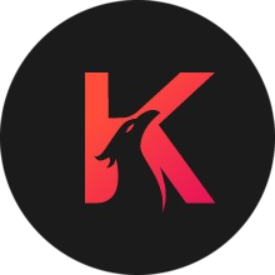Karura (KAR)
What is Karura (KAR)?
The Acala Foundation created Karura in September 2019 to be a Decentralized Finance (DeFi) hub and stablecoin platform for the Kusama network. Karura is intended to operate on Kusama as a parachain.
If you’re unfamiliar, parachains are custom blockchains that feed into the main blockchain and heart of the Kusama network, called the Relay Chain. The Relay Chain is responsible for Kusama’s shared security, consensus and transaction settlements. By being integrated into the Relay Chain, parachains benefit from the Relay Chain’s base features.
The team has chosen to launch Karura (KAR) on Kusama in order to provide DeFi products to its community and is also releasing the Acala platform, a similar hub for Polkadot, later in 2021.
Karura’s native cryptocurrency, KAR, is expected to be airdropped to community members who use their KSM, Kusama’s cryptocurrency, to vote for the parachain to go live on Kusama in a process called a Parachain Auction.
Karura Network Design
Karura is designed to operate as a DeFi hub on Kusama, with the intent to allow developers to create financial applications for its users. Karura is both a layer-1 blockchain platform, in addition to a suite of DeFi applications built on the Karura blockchain.
Karura is expected to host several different functions on its platform:
Crypto Collateralized Stablecoins – Users can stake KSM in order to receive Karura Dollars (kUSD), which maintain a stable 1:1 value with the U.S. dollar.
Decentralized Exchange – An automated market maker exchange (AMM) that works similarly to Uniswap, Balancer, or Curve.
Liquid Staking – Users can stake KSM on Karura and receive LKSM tokens, using the staked crypto in other trading or investing opportunities.
EVM compatible blockchain – Allows Ethereum decentralized applications (dApps) to run on Karura.
Karura KAR Launch & Issuance
Currently, it's estimated that only 100 projects can build on the Kusama network and leverage its Relay Chain’s security by accessing what Kusama calls a parachain slot. This number is flexible and subject to change by governance vote over time.
Access to Kusama parachain slots is provided to projects for fixed periods of 6-48 weeks, with each project needing to go through an auction to win access to one of the 100 slots. In any given auction, teams can bid on up to 8 6-week slots.
During a parachain auction, Kusama holders can bond their KSM in support of the project that they believe should receive a parachain slot. At the end of a determined period of time, the project with the most KSM committed to their campaign generally wins access to a parachain slot, allowing them to operate as a parachain on Kusama’s network for a 6-48 week period.
The Karura team will crowdsource support for its parachain auction bid by accepting community contributions. If Karura wins an auction, supporters are expected to receive Karura’s KAR tokens.
Of note, if Karura fails to win a parachain slot, the KSM committed to their bid by community participants can be returned at the end of Karura’s auction campaign. If Karura wins an auction, the bonded KSM will be returned to participants when Karura’s access to the parachain slot expires .
For more information on Kusama parachain auctions, visit our Parachain Auctions page which covers the topic in more depth.
KAR Monetary Policy
KAR is expected to be airdropped to those who bonded KSM to the project during the parachain auction in what they are calling a “paradrop.” The overall supply and distribution of KAR tokens, as well as the details of the paradrop, cannot be known with certainty and are subject to change. Refer to your Kraken account for the latest estimated rates.
Source : KRAKEN
Tags:
Cryptocurrency
